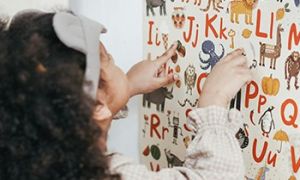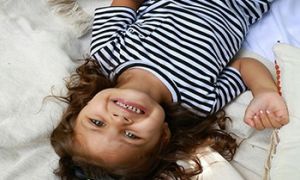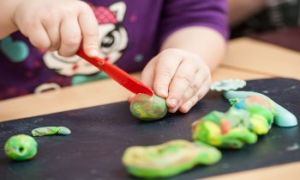The following lists the sub-outcomes, examples of evidence when children achieve each sub-outcome and how educators can promote and help children to achieve EYLF Outcome 5 - Children Are Effective Communicators V2.0.
Children communicate with others beginning at infancy by making eye contact, utilising their entire body to make gestures, noises, and language, as well as using digital and assisted communication. They are sociable creatures with an innate desire to communicate and share ideas, questions, and feelings. To express themselves, interact with others, and deepen their learning, they make use of a variety of techniques and media, including music, dance, and theatre.
A variety of communication techniques are included in literacy, including talking, listening, viewing, composing, reading, and writing, as well as music, movement, dance, storytelling, visual arts, media, and theatre.
The key to continuing and long-lasting literacy development is active listening and a solid foundation in oral language. Different writings appeal to children and teach them things. Electronic and print-based materials are included in contemporary literature. The capacity to analyse texts critically is a crucial aspect of literacy in a society that is becoming more technologically advanced.
Learning Outcome 5 - Children Are Effective Communicators V2.0
Children interact verbally and non-verbally with others for a range of purposes
This is evident when children, for example:
- engage in enjoyable interactions using verbal and non-verbal language
- convey and construct messages with purpose and confidence, building on home/family and community literacies
- respond verbally and non-verbally to what they see, hear, touch, feel and taste
- use language and representations from play, music and art to share and project meaning
- contribute their ideas and experiences in play, small and large group discussions
- recount events in their life
- listen to and act upon simple directions
- attend and give cultural cues that they are listening to and understanding what is said to them
- are independent communicators who initiate Standard Australian English and home language conversations and demonstrate the ability to meet the listener’s needs
- interact with others to explore ideas and concepts, clarify and challenge thinking, negotiate and share new understandings
- exchange ideas, feelings and understandings using language and representations in play
- demonstrate an increasing understanding of measurement and numbers using vocabulary to describe size, length, volume, capacity and names of numbers
- express ideas and feelings and understand and respect the perspectives of others
- use language to communicate thinking about quantities to describe attributes of objects and collections, and to explain mathematical ideas
- show increasing knowledge, understanding and skill in conveying meaning in at least one language
- communicate through Aboriginal and Torres Strait Islander verbal ways of storytelling and yarning and non-verbal ways of deep listening
- begin to recognise the different sounds and words of languages other than English used in homes, early childhood and community environments.
Educators promote this learning for all children when they, for example:
- engage in close, confirming interactions with very young children as they use gestures and make sounds to communicate
- are attuned and respond sensitively and appropriately to children’s efforts to communicate
- listen to and acknowledge children’s approximations of words, to support communication and clarify meanings
- value children’s linguistic heritage and with family and community members encourage the use of and acquisition of home languages and Standard Australian English
- value children’s linguistic heritage and with family and community members encourage the use of and acquisition of home languages and Standard Aboriginal English
- encourage children to recount events in their lives
- play games that promote listening and following instructions, e.g. I spy with my little eye
- recognise that children enter early childhood settings have begun to communicate and make sense of their experiences at home and in their communities
- model language and encourage children to express themselves through language in a range of contexts and for a range of purposes
- engage in sustained communication with children about ideas and experiences, and extend their vocabulary
- include real-life resources to promote children’s use of mathematical language
- provide opportunities for Aboriginal and Torres Strait Islander educators to share ideas about best practices when embedding Aboriginal and Torres Strait Islander perspectives into
- planning and practice
- provide opportunities for children to recognise the different sounds and words of languages other than English
- provide opportunities for visual communication such as signing.
Children engage with a range of texts and gain meaning from these texts
This is evident when children, for example:
- listen and respond to sounds and patterns in speech, stories and rhymes in context
- view and listen to printed, visual and multimedia texts and respond with relevant gestures, actions, comments and/or questions
- sing and chant rhymes, jingles and songs
- take on roles of literacy and numeracy users in their play
- begin to understand key literacy and numeracy concepts and processes, such as the sounds of language, letter-sound relationships, concepts of print and the ways that texts are structured
- explore texts from a range of different perspectives and begin to analyse the meanings
- actively use, engage with and share the enjoyment of language and texts in a range of ways
- recognise and engage with written and oral culturally constructed texts
- listen to and discuss stories about Aboriginal and Torres Strait Islander history, culture, ways of sustainability and care, customs and celebrations
- retell simple stories in a logical sequence using a range of material and expressive forms, e.g. blocks, dramatic play
- engage in pretend play that draws on the use of digital technologies.
Educators promote this learning for all children when they, for example:
- read and share a range of books and other texts with children
- provide a literacy-enriched environment including display print in home languages and Standard Australian English
- sing and chant rhymes, jingles and songs
- engage children in play with words and sounds
- explore concepts such as rhyme and letters and sounds when sharing texts with children
- incorporate familiar family and community texts and tell stories
- join in children’s play and engage children in conversations about the meanings of images and print
- engage children in discussions about books and other texts that promote consideration of diverse perspectives
- support children to analyse ways in which texts are constructed to present particular views and to sell products
- teach art as a language and how artists can use the elements and principles to construct visual/ musical/dance/media texts
- provide opportunities for children to engage with the familiar and unfamiliar culturally constructed text
- seek Aboriginal and Torres Strait Islander guidance to ensure that the authentic voices of Traditional Owners, Elders and community members are highlighted in planning and practice
- engage in Aboriginal and Torres Strait Islander-led professional development about Aboriginal and Torres Strait Islander ways of learning, e.g. 8 ways and both ways pedagogy.
Children express ideas and make meaning using a range of media
This is evident when children, for example:
- use language, sounds, gestures and movement to engage in play to imagine and create roles, scripts and ideas
- share the stories and symbols of their own culture and re-enact well-known stories
- use materials to create artworks (e.g. such as drawing, painting, sculpture, drama, dance, movement, music and storytelling) to express ideas and make meaning
- experiment with ways of expressing ideas and meaning using a range of media
- begin to use images and approximations of letters and words to convey meaning
- enjoy engaging with and sharing a wide variety of cultural texts including those authored by Traditional Owners
- display literacy behaviours by incorporating reading and writing approximations and viewing in their play (including digital technologies)
- view, listen and respond to simple printed, visual and multimedia texts or music and express how it makes them feel
- use simple tools and techniques to shape, assemble and join materials they are using
- explore a range of materials and their properties.
Educators promote this learning for all children when they, for example:
- build on children’s family and community experiences with creative and expressive arts
- provide a range of resources that enable all children to express meaning through the Arts, including visual arts, dance, drama and music
- ask and answer questions during the reading or discussion of books and other texts
- provide resources that encourage children to experiment with images and print
- teach children skills and techniques that will enhance their capacity for self-expression and communication
- join in children’s play and co-construct materials such as signs that extend the play and enhance literacy learning
- respond to children’s images and symbols, talking about the elements, principles, skills and techniques they have used in order to convey meaning
- critically reflect on how they are embedding Aboriginal and Torres Strait Islander perspectives and voices into every part of their planning and their setting
- use a range of questioning strategies appropriate to each child’s capabilities to gain insight into their thinking
- provide Aboriginal and Torres Strait Islander children opportunities to communicate how they are feeling through writing, the Arts, and construction.
Children begin to understand how symbols and pattern systems work
This is evident when children, for example:
- use symbols in play to represent and make meaning
- begin to make connections between and see patterns in their feelings, ideas, words and actions and those of others
- notice and predict the patterns of regular routines and the passing of time
- develop an understanding that symbols are a powerful means of communication and that ideas, thoughts and concepts can be represented through them
- begin to be aware of the relationships between oral, written and visual representations
- begin to recognise patterns and relationships and the connections between them
- begin to sort, categorise, order and compare collections and events and attributes of objects and materials in their social and natural worlds
- begin to identify and use the names of basic colours and simple shapes
- listen and respond to sounds and patterns in speech, stories and rhyme
- draw on the memory of a sequence to complete a task
- draw on their experiences in constructing meaning using symbols
- identify Aboriginal and Torres Strait Islander signs and symbols relevant to their area and investigate and begin to recognise with assistance representations of stereotypes or narrow depictions of diversity
- begin to identify the different purposes of text types, e.g. environmental print, informational texts, narratives
- use mark-making and drawing as symbols of communication.
Educators promote this learning for all children when they, for example:
- draw children’s attention to symbols and patterns in their environment and talk about patterns and relationships, including the relationship between letters and sounds
- provide children with access to a wide range of everyday materials that they can use to create patterns and to sort, categorise, order and compare
- engage children in noticing, using and discussing symbol systems, such as, letters, numbers, time, money, musical notation and other symbols children are exposed to in the environment, texts and images
- encourage children to develop their own symbol systems and provide them with opportunities to explore culturally constructed symbol systems including Aboriginal and Torres Strait Islander signs and symbols
- respond to children’s signs and symbol systems and identify elements used to convey meaning
- identify concepts of rhyme and predictable sequences when sharing texts with children
- use music to develop children’s understanding of patterns, e.g. clapping names
- incorporate familiar family and community texts as well as those in different languages and dialects
- scribe descriptions of children’s drawings and display results for comment and reflection.
Children use digital technologies and media to access information, investigate ideas and represent their thinking
This is evident when children, for example:
- identify technologies and their use in everyday life
- incorporate real or imaginary technologies as features of their play
- use digital technologies to access images and information, explore diverse perspectives and make sense of their world
- develop simple skills to operate digital devices, such as turning on and taking a photo with a tablet
- use digital technologies and media for creative expression (e.g. designing, drawing, composing)
- engage with technologies and media for fun and social connection
- identify basic icons and keys (e.g. delete button) and use them to support their navigation (e.g. click, swipe, home, scroll) and understand these terms
- adopt collaborative approaches in their learning about and with digital technologies.
Educators promote this learning for all children when they, for example:
- acknowledge technologies are a feature of children’s lives and, as such, will be a feature of their imaginative and investigative play
- provide children with access to a range of technologies
- integrate technologies across the curriculum and into children’s multimodal play experiences and projects
- teach skills and techniques and encourage children to use technologies to explore new information and represent their ideas
- encourage collaborative learning about and through technologies between children, and children and educators
- provide opportunities for children to have access to different forms of communication technologies
- research topics and search for information with children
- teach children critical reflection skills and encourage them to evaluate the quality and trustworthiness of information sources
- have opportunities to develop their own knowledge and understanding of appropriate digital technology use and safety with children and families
- assist children to have a basic understanding that the internet is a network that people use to connect and source information
Further Reading
EYLF Learning Outcomes Version 2.0 - The following articles provide a list of the 5 EYLF Learning Outcomes and their sub-outcomes (Version 2.0).
EYLF Outcome 1 - Child Have A Strong Sense Of Identity V2.0 - The following lists the sub outcomes, examples of evidence when children can achieve each sub outcome and how educators can promote and help children to achieve EYLF Learning Outcome 1: Children Have A Strong Sense Of Identity V2.0.
EYLF Outcome 2 - Children Are Connected With And Contribute To Their World V2.0 - The following lists the sub-outcomes, examples of evidence when children achieve each sub-outcome and how educators can promote and help children to achieve EYLF Outcome 2 - Children Are Connected With And Contribute To Their World V2.0.
EYLF Outcome 3 - Children Have A Strong Sense Of Wellbeing V2.0 - The following lists the sub-outcomes, examples of evidence when children achieve each sub-outcome and how educators can promote and help children to achieve EYLF Outcome 3 - Children Have A Strong Sense Of Wellbeing V2.0.
EYLF Outcome 4 - Children Are Confident And Involved Learners - The following lists the sub-outcomes, examples of evidence when children achieve each sub-outcome and how educators can promote and help children to achieve EYLF Outcome 4 - Children Are Confident And Involved Learners V2.0.


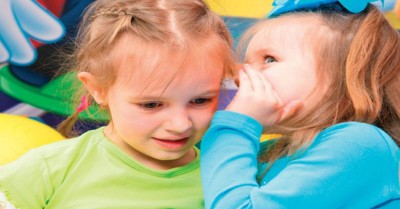

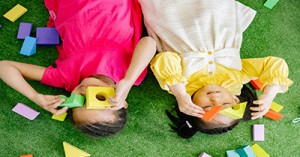


 Here is the list of the EYLF Learning Outcomes that you can use as a guide or reference for your documentation and planning. The EYLF
Here is the list of the EYLF Learning Outcomes that you can use as a guide or reference for your documentation and planning. The EYLF The EYLF is a guide which consists of Principles, Practices and 5 main Learning Outcomes along with each of their sub outcomes, based on identity,
The EYLF is a guide which consists of Principles, Practices and 5 main Learning Outcomes along with each of their sub outcomes, based on identity, This is a guide on How to Write a Learning Story. It provides information on What Is A Learning Story, Writing A Learning Story, Sample
This is a guide on How to Write a Learning Story. It provides information on What Is A Learning Story, Writing A Learning Story, Sample One of the most important types of documentation methods that educators needs to be familiar with are “observations”. Observations are crucial for all early childhood
One of the most important types of documentation methods that educators needs to be familiar with are “observations”. Observations are crucial for all early childhood To support children achieve learning outcomes from the EYLF Framework, the following list gives educators examples of how to promote children's learning in each individual
To support children achieve learning outcomes from the EYLF Framework, the following list gives educators examples of how to promote children's learning in each individual Reflective practice is learning from everyday situations and issues and concerns that arise which form part of our daily routine while working in an early
Reflective practice is learning from everyday situations and issues and concerns that arise which form part of our daily routine while working in an early Within Australia, Programming and Planning is reflected and supported by the Early Years Learning Framework. Educators within early childhood settings, use the EYLF to guide
Within Australia, Programming and Planning is reflected and supported by the Early Years Learning Framework. Educators within early childhood settings, use the EYLF to guide When observing children, it's important that we use a range of different observation methods from running records, learning stories to photographs and work samples. Using
When observing children, it's important that we use a range of different observation methods from running records, learning stories to photographs and work samples. Using This is a guide for educators on what to observe under each sub learning outcome from the EYLF Framework, when a child is engaged in
This is a guide for educators on what to observe under each sub learning outcome from the EYLF Framework, when a child is engaged in The Early Years Learning Framework describes the curriculum as “all the interactions, experiences, activities, routines and events, planned and unplanned, that occur in an environment
The Early Years Learning Framework describes the curriculum as “all the interactions, experiences, activities, routines and events, planned and unplanned, that occur in an environment